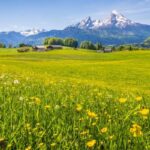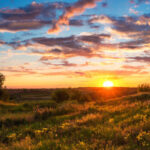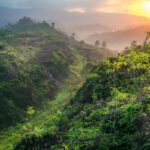We explain what the tundra is, what its climate is and the animals that inhabit it. Also, what is its flora like and the types of tundra that exist.

¿What is the tundra?
The tundra is a biome that is characterized by having a frozen subsoil little rainfall and a flat terrain with a lack of tree vegetation. The term tundra comes from Russian and means “treeless plain.”
It is the coldest biome on the planet, so It is usually found in areas near the poles and has a characteristic and distinctive landscape formed by a layer of snow that covers both the ground and the mountains.
The tundra occupies about 10% of the earth's surface and it is found mostly in the northern hemisphere in the area of Alaska, Iceland, Siberia, southern Greenland, northern Russia, Scandinavia and northern Canada. In the southern hemisphere it occupies part of the Antarctic continent, peak areas between Chile and Argentina and several subantarctic islands.
There are three types of tundras: Arctic tundra, alpine tundra and Antarctic tundra each have a distinctive landscape, climate and flora and fauna.
See also: Desert
tundra climate
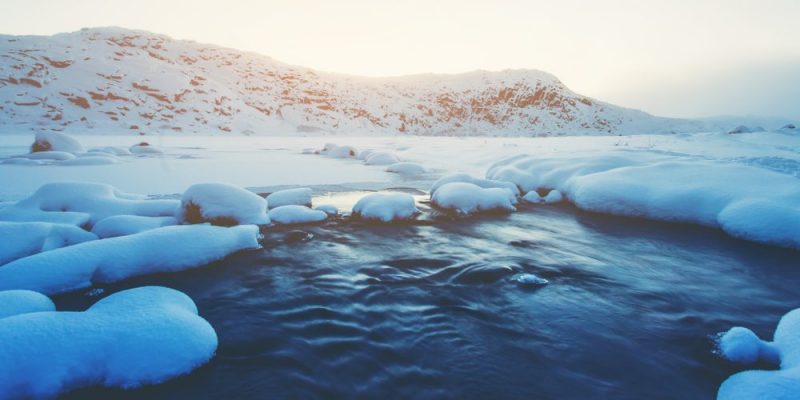
The tundra is a biome that It is characterized by having an extremely cold climate very strong winds and little rainfall (between 500 and 1000 mm annually). The low rainfall usually occurs in summer (it increases in coastal tundra areas) and results in soil with few nutrients.
Most tundra It has more than two seasons a year: winter, which is longer than summer, cold and dark; and summer, which is short and has light rainfall. Tundra temperatures are cold year-round and vary with each type of tundra. They can reach an average of 5º C in the warm months and below -20 ºC in the cold months. During the summer, the melting of the topsoil produces areas of swamps.
tundra fauna
tundra animals must cope with low rainfall and low temperatures. Some avoid winter by migrating to warmer areas and others have layers of fat under their skin and a thick, short coat that protects them from the cold and wind of the tundra. In addition, it is common to find animals with short legs and small ears, which allows them to have the least amount of skin exposed to low temperatures.
The fauna that lives in the tundra varies depending on the type of tundra and the climatic conditions of each one. The most common animals in the Arctic tundra are: the white hare, the wolf, the arctic fox, the polar bear, the reindeer, the ox, the fur seals and the seals. It is common for many of these animals to have white fur to blend in with the snow or ice on the ground of this biome.
tundra flora
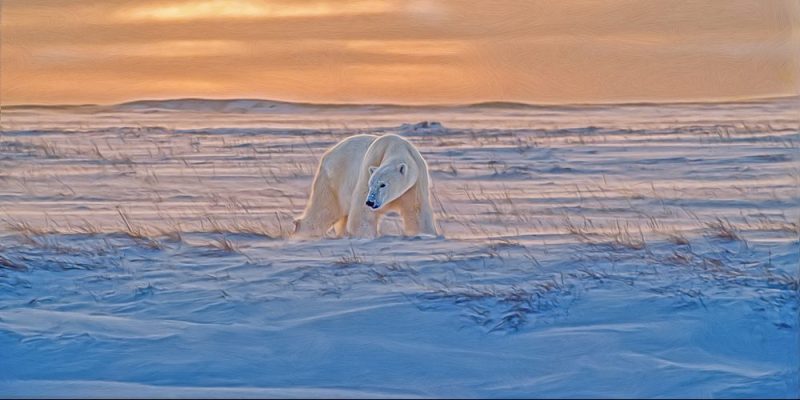
Due to strong winds, the tundra vegetation It is simple in structure and mostly low. In addition, frozen soils and lack of water make it difficult for plant life to survive. However, in many parts of the tundra the ground is covered with moss, lichens, sedges and ericaceae that usually grow in groups.
Although there is little or no tall vegetation, it does present vegetation with flowers, around 400 species of vegetation among which liverworts and flowering grasses stand out.
tundra soil
Part of the subsoil of the tundra, especially in the arctic tundra in areas such as Russia, Alaska and Canada, It is covered by permafrost, that is, it is completely frozen. This layer has large amounts of carbon product of the decomposition of plants and animals that were retained within it.
In recent times, The increase in temperatures caused the melting of this frozen layer and the subsequent release of the retained carbon into the atmosphere. This carbon is released in the form of gases, such as carbon dioxide and methane, which are greenhouse gases that contribute to global warming.
In addition to the release of these harmful gases, the melting of permafrost has other negative consequences, such as flooding caused by thawing and the destabilization that occurs in the land above the permafrost.
Types of tundra
arctic tundra
The arctic tundra is a type of tundra and It is located in the northern hemisphere in parts of Canada, Alaska and Russia, in areas where the subsoil is frozen and the ground covered with ice or snow. The Arctic tundra can have temperatures below -50 ºC and little rainfall, so it is not common to have trees but there is a variety of mosses, grasses, plants and flowers.
Faced with very low temperatures, plants grow side by side and they are low in height to protect them from the strong winds that hit the area.
When summer arrives, the climate can exceed freezing temperatures (0ºC) so the ground begins to thaw. This allows some insects and birds that migrate during the winter, such as the Arctic owl or the Alaskan sandpiper, to return to the Arctic tundra during the summer months when climatic conditions allow them to feed and develop.
The animals that live in this type of tundra have certain physical conditions (such as an extensive layer of fat or dense plumage) that help them survive low temperatures. Besides, many species hibernate during the winter months.
Some of the species that live in the Arctic tundra are: reindeer, polar bears, arctic foxes, arctic oxen, lemmings and polar hares. Also There are a few invertebrates adapted to low temperatures like mosquitoes and flies.
alpine tundra
The alpine tundra is a type of tundra found in the mountains of Earth. Due to the slope of the mountains in which it is located, the alpine tundra has good drainage, so the subsoil is not frozen.
Temperatures range between 5 and 7 ºC in summer and -40 ºC in winter. Besides, Its climate is characterized by low pressure strong winds and some precipitation that usually falls in the form of snow.
The low presence of oxygen at altitude and other factors such as low temperatures make life difficult for animals in the alpine tundra. Some species of mammals and birds only inhabit these areas in summer. such as goats, sheep, chamois and bighorn sheep.
Trees do not grow in this type of tundra, but herbs and shrubs very similar to those that grow in the Arctic tundra do, such as dwarf shrubs, mosses, lichens and grasses.
Antarctic tundra
The Antarctic tundra is located in the South Georgia Islands, the South Sandwich Islands and the Antarctic Peninsula in the southern hemisphere of the planet.
It is an area with a cold climate, although It is warmer than other parts of the Antarctic continent and with some precipitation. There you can find lichens, liver plants, species of terrestrial and aquatic algae and two flowering plants: Antarctic grass and Antarctic carnation.
Unlike the Arctic tundra, in the Antarctic tundra mammals do not live although species such as seals, whales and sea lions do so in the seas surrounding Antarctica. Penguins are one of the few birds that inhabit this area, along with other species such as albatrosses and seagulls.
Importance of the tundra
The tundra is a fundamental biome due to the presence of animals and plants that contribute to the planet's biodiversity. The conservation of these ecosystems allows maintaining environmental balance.
Besides, It is the only biome in which permafrost exists which must be preserved at its original temperature since its melting produces serious consequences for the development of life on the planet.
Continue with: Coniferous forest
References
- “Tundra” at Berkeley University.
- “Tundra” in RAE.
- “Tundra” in Britannica.
- “Rapidly melting Arctic permafrost affects us all” in National Geographic.
- “Permafrost cannot be seen but it melts” at Fundación Aquae.
- “Tundra” on WWF.

